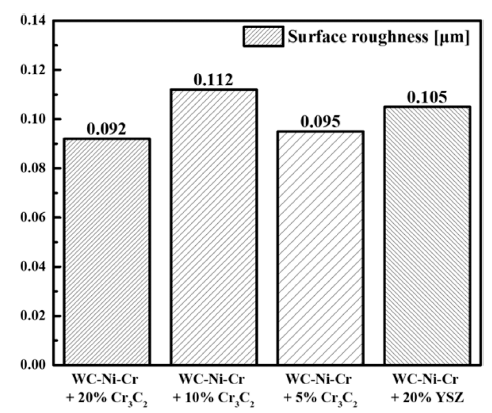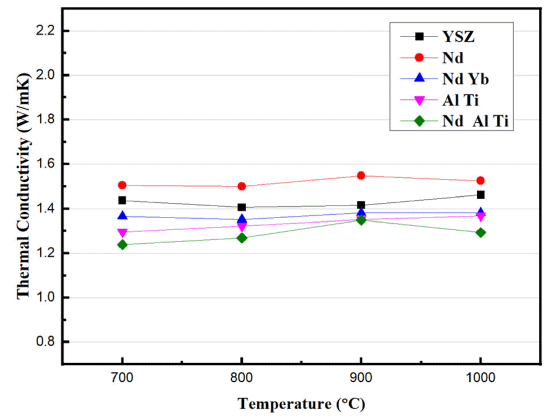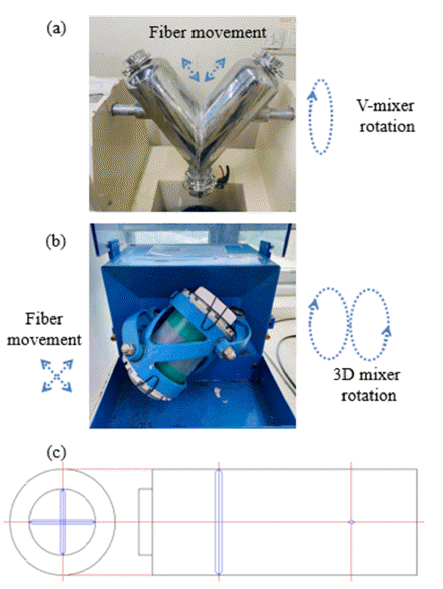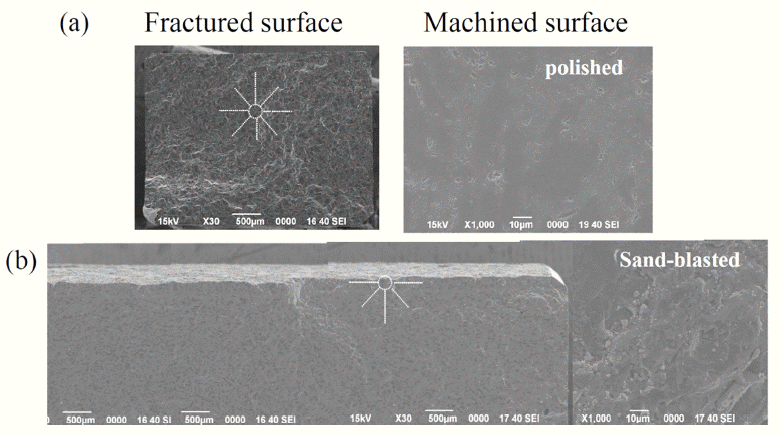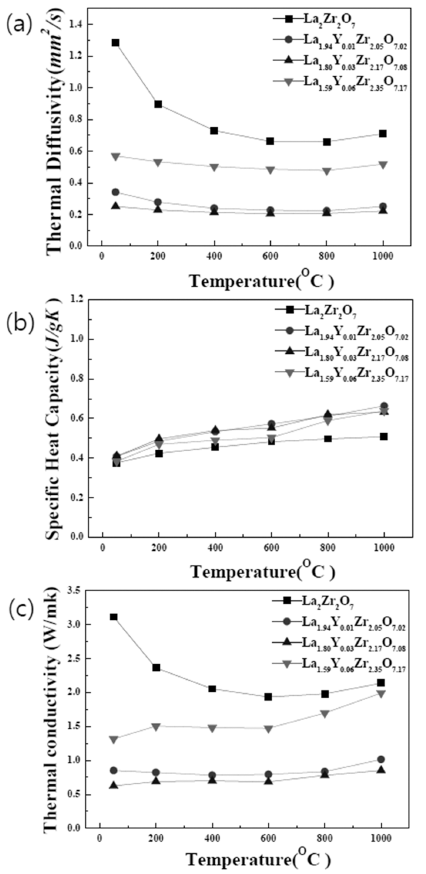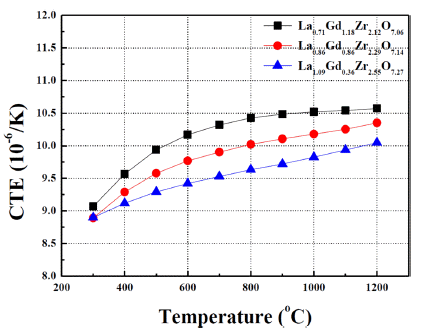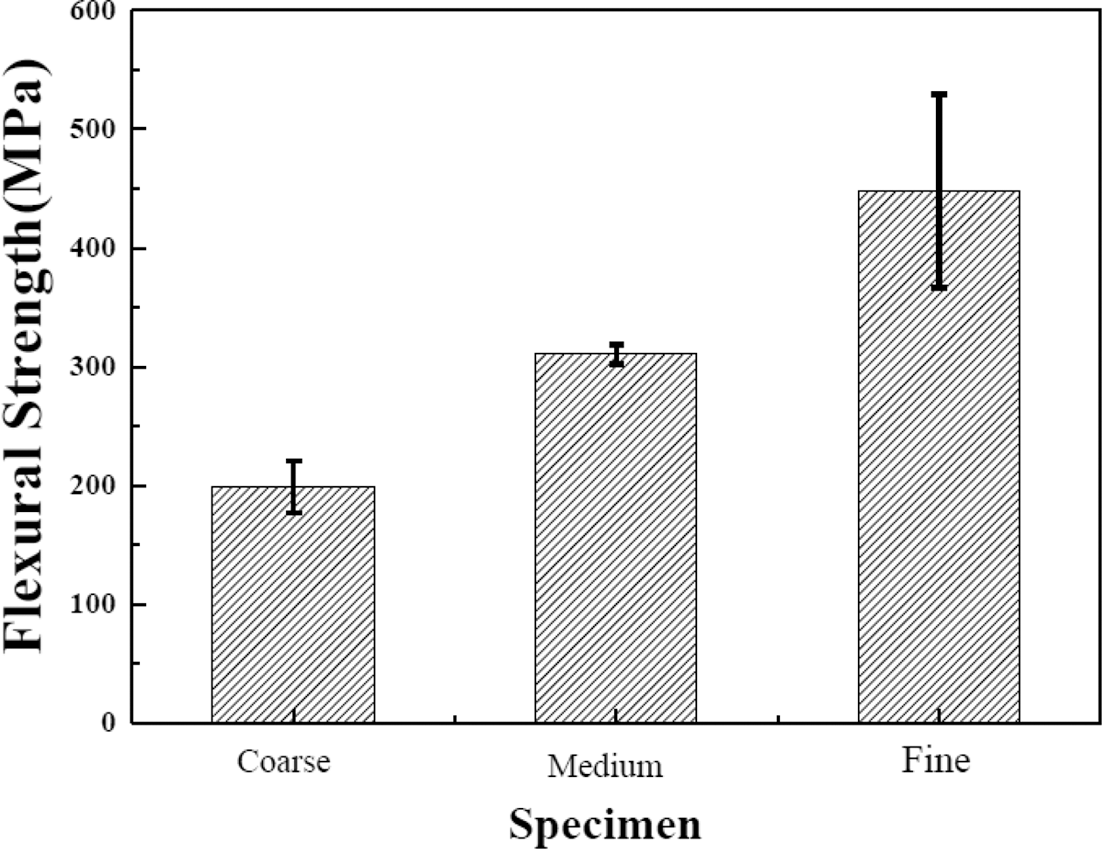- [Korean]
- Tribological Behavior Analysis of WC-Ni-Cr + Cr3C2 and WC-Ni-Cr + YSZ Coatings Sprayed by HVOF
-
Tae-Jun Park, Gye-Won Lee, Yoon-Suk Oh
-
J Powder Mater. 2023;30(5):415-423. Published online October 1, 2023
-
DOI: https://doi.org/10.4150/KPMI.2023.30.5.415
-
-
 Abstract Abstract
 PDF PDF
With the increasing attention to environmental pollution caused by particulate matter globally, the automotive industry has also become increasingly interested in particulate matter, especially particulate matter generated by automobile brake systems. Here, we designed a coating composition and analyzed its mechanical properties to reduce particulate matter generated by brake systems during braking of vehicles. We designed a composition to check the mechanical properties change by adding Cr3C2 and YSZ to the WC-Ni-Cr composite composition. Based on the designed composition, coating samples were manufactured, and the coating properties were analyzed by Vickers hardness and ball-on-disk tests. As a result of the experiments, we found that the hardness and friction coefficient of the coating increased as the amount of Cr3C2 added decreased. Furthermore, we found that the hardness of the coating layer decreased when YSZ was added at 20vol%, but the friction coefficient was higher than the composition with Cr3C2 addition.
- [Korean]
- Analysis of Monoclinic Phase Change and Microstructure According to High-temperature Heat Treatment of Oxide-doped YSZ
-
Gye-Won Lee, Yong-Seok Choi, Chang-Woo Jeon, In-Hwan Lee, Yoon-Suk Oh
-
J Powder Mater. 2022;29(6):468-476. Published online December 1, 2022
-
DOI: https://doi.org/10.4150/KPMI.2022.29.6.468
-
-
 Abstract Abstract
 PDF PDF
Yttria-stabilized zirconia (YSZ) has a low thermal conductivity, high thermal expansion coefficient, and excellent mechanical properties; thus, it is used as a thermal barrier coating material for gas turbines. However, during long-time exposure of YSZ to temperatures of 1200°C or higher, a phase transformation accompanied by a volume change occurs, causing the YSZ coating layer to peel off. To solve this problem, YSZ has been doped with trivalent and tetravalent oxides to obtain coating materials with low thermal conductivity and suppressed phase transformation of zirconia. In this study, YSZ is doped with trivalent oxides, Nd2O3, Yb2O3, Al2O3, and tetravalent oxide, TiO2, and the thermal conductivity of the obtained materials is analyzed according to the composition; furthermore, the relative density change, microstructure change, and m-phase formation behavior are analyzed during long-time heat treatment at high temperatures.
- [Korean]
- Fabrication of Light-weight Ceramic Insulation Materials by Using Oxide Ceramic Fibers for Reusable Thermal Protection Systems
-
Seongwon Kim, Min-Soo Nam, Yoon-Suk Oh, Sahn Nahm, Jaesung Shin, Hyeonjun Kim, Bum-Seok Oh
-
J Powder Mater. 2022;29(6):477-484. Published online December 1, 2022
-
DOI: https://doi.org/10.4150/KPMI.2022.29.6.477
-
-
1,005
View
-
21
Download
-
1
Citations
-
 Abstract Abstract
 PDF PDF
Thermal protection systems (TPS) are a group of materials that are indispensable for protecting spacecraft from the aerodynamic heating occurring during entry into an atmosphere. Among candidate materials for TPS, ceramic insulation materials are usually considered for reusable TPS. In this study, ceramic insulation materials, such as alumina enhanced thermal barrier (AETB), are fabricated via typical ceramic processing from ceramic fiber and additives. Mixtures of silica and alumina fibers are used as raw materials, with the addition of B4C to bind fibers together. Reaction-cured glass is also added on top of AETB to induce water-proof functionality or high emissivity. Some issues, such as the elimination of clumps in the AETB, and processing difficulties in the production of reusable surface insulation are reported as well. -
Citations
Citations to this article as recorded by  - Fabrication and High-Temperature Performance Evaluation of Light-Weight Insulation Materials and Coatings for Reusable Thermal Protection Systems
Min-Soo Nam, Jong-Il Kim, Jaesung Shin, Hyeonjun Kim, Bum-Seok Oh, Seongwon Kim
Journal of Powder Materials.2024; 31(6): 521. CrossRef
- [Korean]
- Effect of Deposition Parameter and Mixing Process of Raw Materials on the Phase and Structure of Ytterbium Silicate Environmental Barrier Coatings by Suspension Plasma Spray Method
-
Ho-lim Ryu, Seon-A Choi, Sung-Min Lee, Yoon-Soo Han, Kyun Choi, Sahn Nahm, Yoon-Suk Oh
-
J Korean Powder Metall Inst. 2017;24(6):437-443. Published online December 1, 2017
-
DOI: https://doi.org/10.4150/KPMI.2017.24.6.437
-
-
479
View
-
2
Download
-
1
Citations
-
 Abstract Abstract
 PDF PDF
SiC-based composite materials with light weight, high durability, and high-temperature stability have been actively studied for use in aerospace and defense applications. Moreover, environmental barrier coating (EBC) technologies using oxide-based ceramic materials have been studied to prevent chemical deterioration at a high temperature of 1300°C or higher. In this study, an ytterbium silicate material, which has recently been actively studied as an environmental barrier coating because of its high-temperature chemical stability, is fabricated on a sintered SiC substrate. Yb2O3 and SiO2 are used as the raw starting materials to form ytterbium disilicate (Yb2Si2O7). Suspension plasma spraying is applied as the coating method. The effect of the mixing method on the particle size and distribution, which affect the coating formation behavior, is investigated using a scanning electron microscope (SEM), an energy dispersive spectrometer (EDS), and X-ray diffraction (XRD) analysis. It is found that the originally designed compounds are not effectively formed because of the refinement and vaporization of the raw material particles, i.e., SiO2, and the formation of a porous coating structure. By changing the coating parameters such as the deposition distance, it is found that a denser coating structure can be formed at a closer deposition distance. -
Citations
Citations to this article as recorded by  - Fabrication, Microstructure and Adhesive Properties of BCuP-5 Filler Metal/Ag Plate Composite by using Plasma Spray Process
Seong-June Youn, Young-Kyun Kim, Jae-Sung Park, Joo-Hyun Park, Kee-Ahn Lee
Journal of Korean Powder Metallurgy Institute.2020; 27(4): 333. CrossRef
- [Korean]
- Mechanical Strength Values of Reaction-Bonded-Silicon-Carbide Tubes with Different Sample Size
-
Seongwon Kim, Soyul Lee, Yoon-Suk Oh, Sung-Min Lee, Yoonsoo Han, Hyun-Ick Shin, Youngseok Kim
-
J Korean Powder Metall Inst. 2017;24(6):450-456. Published online December 1, 2017
-
DOI: https://doi.org/10.4150/KPMI.2017.24.6.450
-
-
 Abstract Abstract
 PDF PDF
Reaction-bonded silicon carbide (RBSC) is a SiC-based composite ceramic fabricated by the infiltration of molten silicon into a skeleton of SiC particles and carbon, in order to manufacture a ceramic body with full density. RBSC has been widely used and studied for many years in the SiC field, because of its relatively low processing temperature for fabrication, easy use in forming components with a near-net shape, and high density, compared with other sintering methods for SiC. A radiant tube is one of the most commonly employed ceramics components when using RBSC materials in industrial fields. In this study, the mechanical strengths of commercial RBSC tubes with different sizes are evaluated using 3-point flexural and C-ring tests. The size scaling law is applied to the obtained mechanical strength values for specimens with different sizes. The discrepancy between the flexural and C-ring strengths is also discussed.
- [Korean]
- Fabrication and Characterization of Ceramics and Thermal Barrier Coatings of Lanthanum Zirconate with Reduced Rare-earth Contents in the La2O3-ZrO2 System
-
Chang-Sup Kwon, Sujin Lee, Sung-Min Lee, Yoon-Suk Oh, Hyung-Tae Kim, Byung-Koog Jang, Seongwon Kim
-
J Korean Powder Metall Inst. 2015;22(6):413-419. Published online December 1, 2015
-
DOI: https://doi.org/10.4150/KPMI.2015.22.6.413
-
-
422
View
-
2
Download
-
1
Citations
-
 Abstract Abstract
 PDF PDF
Lanthanum zirconate, La2Zr2O7, is one of the most promising candidates for next-generation thermal barrier coating (TBC) applications in high efficient gas turbines due to its low thermal conductivity and chemical stability at high temperature. In this study, bulk specimens and thermal barrier coatings are fabricated via a variety of sintering processes as well as suspension plasma spray in lanthanum zirconates with reduced rare-earth contents. The phase formation, microstructure, and thermo-physical properties of these oxide ceramics and coatings are examined. In particular, lanthanum zirconates with reduced rare-earth contents in a La2Zr2O7-4YSZ composite system exhibit a single phase of fluorite or pyrochlore after fabricated by suspension plasma spray or spark plasma sintering. The potential of lanthanum zirconate ceramics for TBC applications is also discussed. -
Citations
Citations to this article as recorded by  - Phase Formation and Thermo-physical Properties of Lanthanum/Gadolinium Zirconate with Reduced Rare-earth Contents for Thermal Barrier Coatings
Sujin Lee, Chang-Sup Kwon, Sung-Min Lee, Yoon-Suk Oh, Hyung-Tae Kim, Sahn Nahm, Seongwon Kim
Journal of Korean Powder Metallurgy Institute.2015; 22(6): 420. CrossRef
- [Korean]
- Phase Formation and Thermo-physical Properties of Lanthanum/Gadolinium Zirconate with Reduced Rare-earth Contents for Thermal Barrier Coatings
-
Sujin Lee, Chang-Sup Kwon, Sung-Min Lee, Yoon-Suk Oh, Hyung-Tae Kim, Sahn Nahm, Seongwon Kim
-
J Korean Powder Metall Inst. 2015;22(6):420-425. Published online December 1, 2015
-
DOI: https://doi.org/10.4150/KPMI.2015.22.6.420
-
-
741
View
-
2
Download
-
3
Citations
-
 Abstract Abstract
 PDF PDF
Rare-earth zirconates, such as lanthanum zirconates and gadolinium zirconates, have been intensively investigated due to their excellent properties of low thermal conductivity as well as chemical stability at high temperature, which can make these materials ones of the most promising candidates for next-generation thermal barrier coating applications. In this study, three compositions, lanthanum/gadolinium zirconates with reduced rare-earth contents from stoichiometric RE2Zr2O7 compositions, are fabricated via solid state reaction as well as sintering at 1600°C for 4 hrs. The phase formation, microstructure, and thermo-physical properties of three oxide ceramics are examined. In particular, each oxide ceramics exhibits composite structures between pyrochlore and fluorite phases. The potential of lanthanum/ gadolinium zirconate ceramics for TBC applications is also discussed. -
Citations
Citations to this article as recorded by  - Rare earth zirconate nanostructures: Recent development on preparation and photocatalytic applications
Sahar Zinatloo-Ajabshir, Masoud Salavati-Niasari, Azam Sobhani, Zahra Zinatloo-Ajabshir
Journal of Alloys and Compounds.2018; 767: 1164. CrossRef - A novel Co-ions complexation method to synthesize pyrochlore La 2 Zr 2 O 7
Chunhui Xu, Hongyun Jin, Qifeng Zhang, Can Huang, Daifeng Zou, Fujian He, Shuen Hou
Journal of the European Ceramic Society.2017; 37(8): 2871. CrossRef - Fabrication and Characteristics of Thermal Barrier Coatings in the La2O3-Gd2O3-ZrO2System by Using Suspension Plasma Spray with Different Suspension Preparations
Soyul Lee, Sung-Min Lee, Yoon-Suk Oh, Hyung-Tae Kim, Sahn Nahm, Seongwon Kim
Journal of the Korean institute of surface engineering.2016; 49(6): 595. CrossRef
- [Korean]
- Effect of the SiC Size on the Thermal and Mechanical Properties of Reaction-bonded Silicon Carbide Ceramics
-
Chang-Sup Kwon, Yoon-Suk Oh, Sung-Min Lee, Yoonsoo Han, Hyun-Ick Shin, Youngseok Kim, Seongwon Kim
-
J Korean Powder Metall Inst. 2014;21(6):467-472. Published online December 1, 2014
-
DOI: https://doi.org/10.4150/KPMI.2014.21.6.467
-
-
820
View
-
11
Download
-
3
Citations
-
 Abstract Abstract
 PDF PDF
RBSC (reaction-bonded silicon carbide) represents a family of composite ceramics processed by infiltrating with molten silicon into a skeleton of SiC particles and carbon in order to fabricate a fully dense body of silicon carbide. RBSC has been commercially used and widely studied for many years, because of its advantages, such as relatively low temperature for fabrication and easier to form components with near-net-shape and high relative density, compared with other sintering methods. In this study, RBSC was fabricated with different size of SiC in the raw material. Microstructure, thermal and mechanical properties were characterized with the reaction-sintered samples in order to examine the effect of SiC size on the thermal and mechanical properties of RBSC ceramics. Especially, phase volume fraction of each component phase, such as Si, SiC, and C, was evaluated by using an image analyzer. The relationship between microstructures and physical properties was also discussed. -
Citations
Citations to this article as recorded by  - Structural and Mechanical Properties of SiC-Rich By-Products of the Metal Grade Si Process
Thomas Hafner, Jonas Hafner, Frank Kimm, Vira Bovda, Oleksandr Bovda, Oleksandr Kuprin, Anatoliy Pikalov, Kostiantyn Lentsov, Pavlo Schikhaylo, Yriy Onyschuk, Andriy Tarasuk, Viktoriya Podhurska, Bogdan Vasyliv, Oleksandr Shcheretsky, Ihor Vorona, Roman Y
Materials Science Forum.2024; 1113: 87. CrossRef - Effect of Y2O3 Additive Amount on Densification of Reaction Bonded Silicon Carbides Prepared by Si Melt Infiltration into All Carbon Preform
Kyeong-Sik Cho, Min-Ho Jang
Korean Journal of Materials Research.2021; 31(5): 301. CrossRef - Mechanical Strength Values of Reaction-Bonded-Silicon-Carbide Tubes with Different Sample Size
Seongwon Kim, Soyul Lee, Yoon-Suk Oh, Sung-Min Lee, Yoonsoo Han, Hyun-Ick Shin, Youngseok Kim
Journal of Korean Powder Metallurgy Institute.2017; 24(6): 450. CrossRef
|
